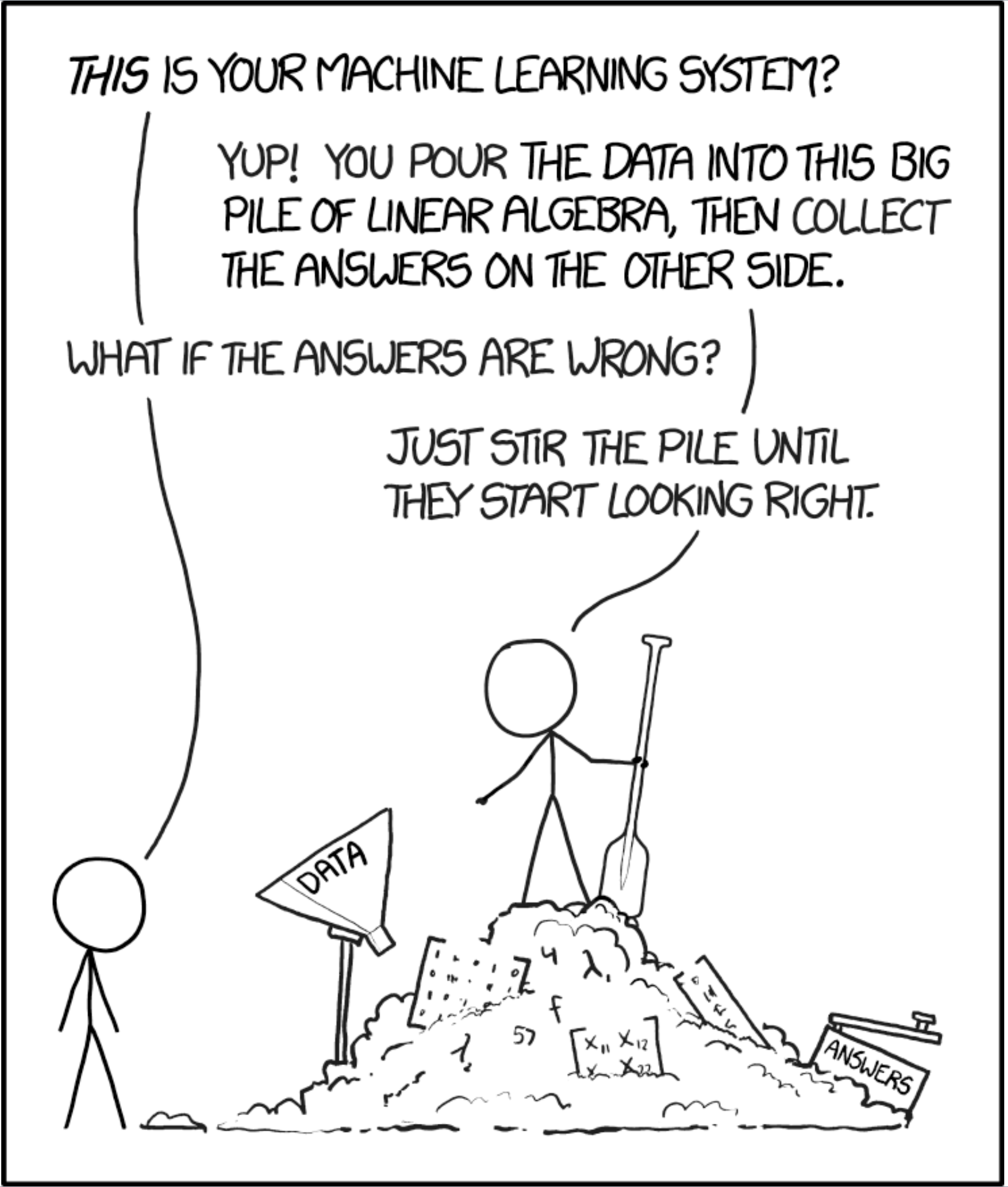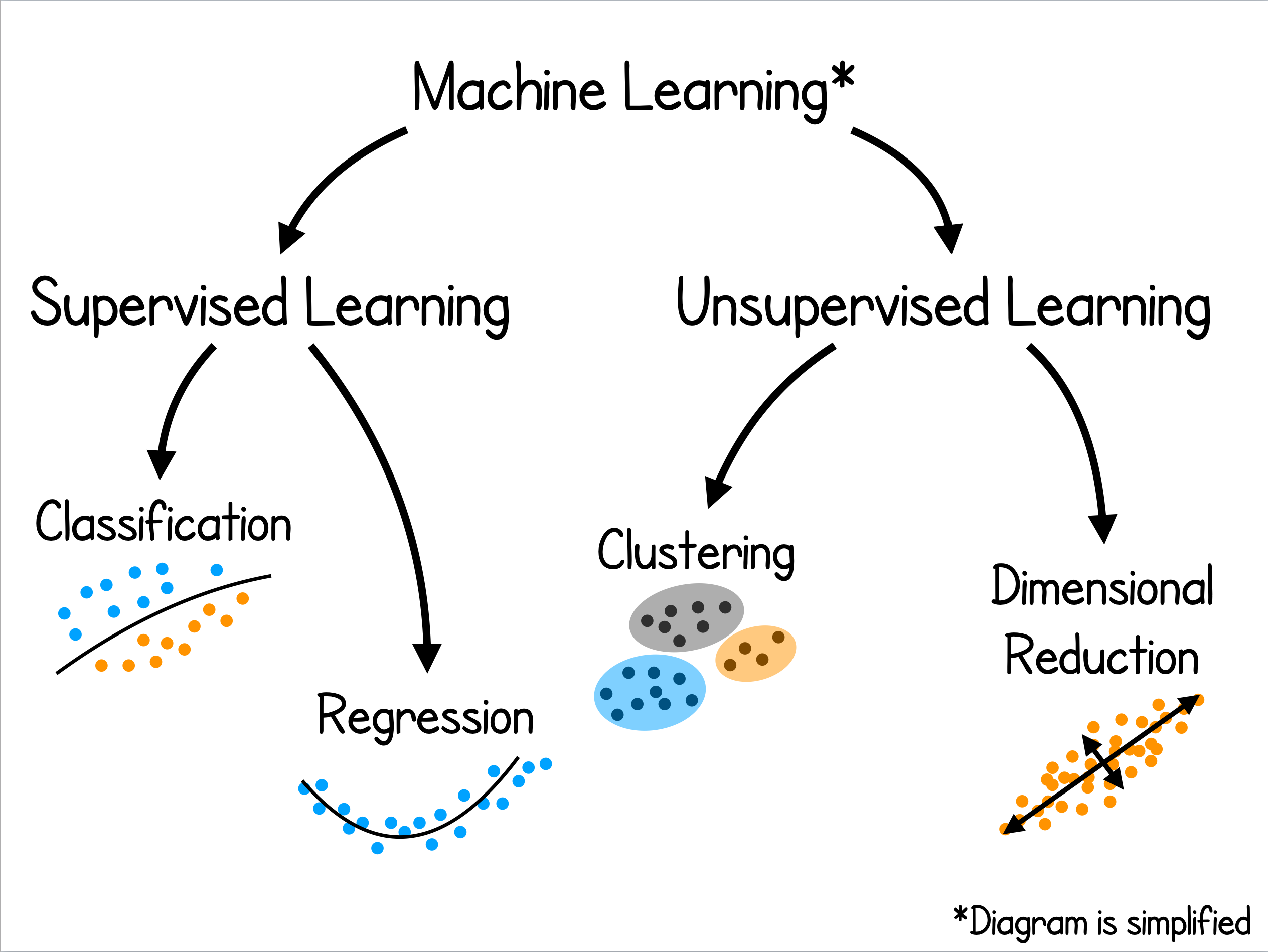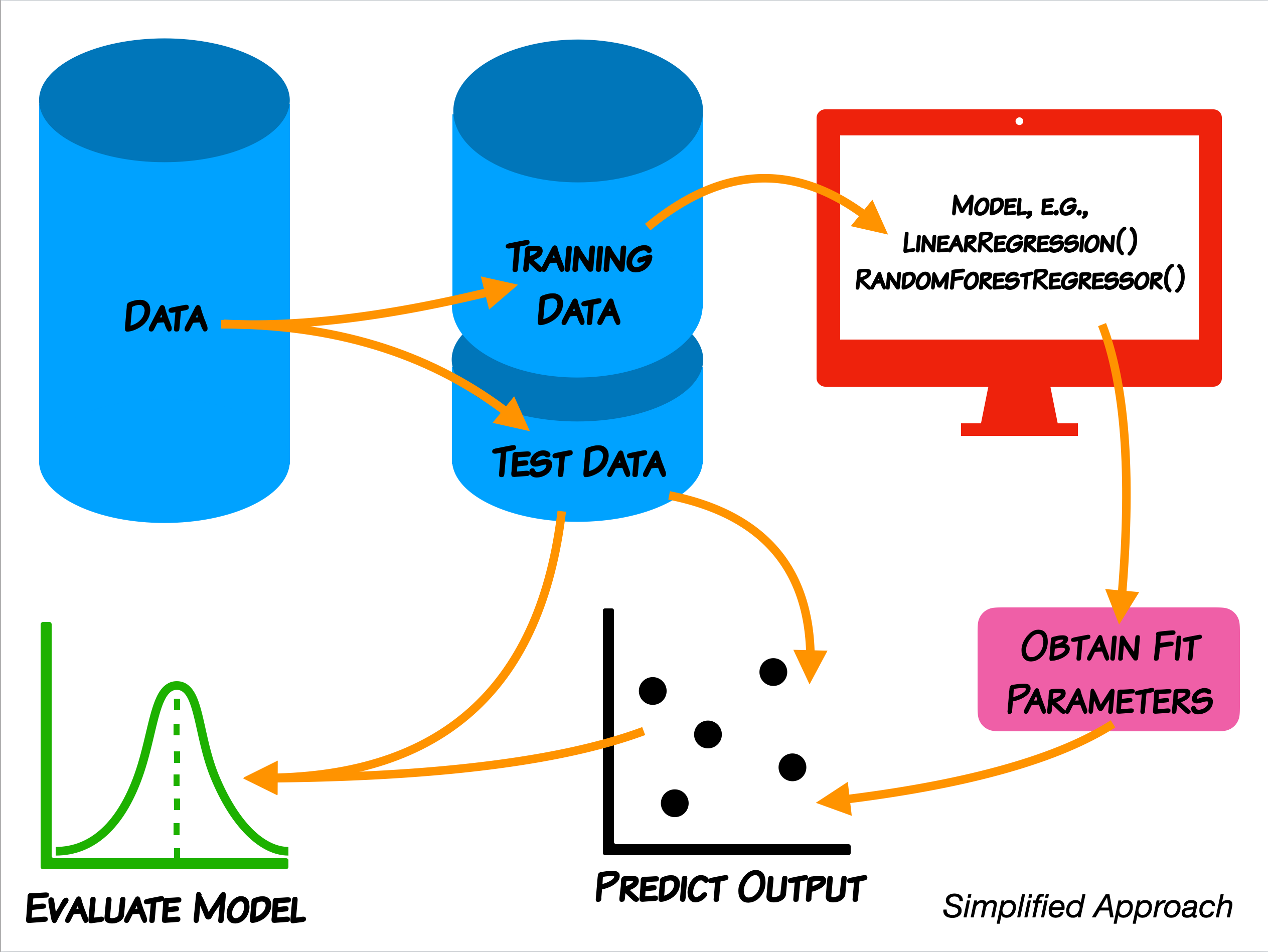## Welcome to AAPT Workshop W27
### Machine Learning and PER
*Supported by Michigan State University's College of Natural Science and The Lappan-Phillips Foundation.*
### Workshop Facilitators
* Danny Caballero [caballero@pa.msu.edu](mailto:caballero@pa.msu.edu)
* Rachel Henderson [hende473@msu.edu](mailto:hende473@msu.edu)
[LML Tutorials Website](https://github.com/learningmachineslab/tutorials)
## Introductions
* Name
* Institution
* Role
* Experience with ML
* Experience with Python
### What do you want to use Machine Learning for?
[Google JamBoard](https://jamboard.google.com/d/18xCxRs7PLuf1Zbb0HClImXql8RHqVunD56YzBQ-BKbE/edit?usp=sharing)
### What do we use Machine Learning for?
* Modeling assessment data
* Finding structure in assessment data
* Modeling student degree attainment
* Determining factors that influence attainment
* Modeling graduate admissions
* Determining factors that predict admissions
* Developing language models of papers
* Extracting themes from a paper collection
### Today's workshop:
* Short introduction to the ML paradigm
* Guided tutorial to read, plot, analyze assessment data
* Comparative analysis using ML regression methods
### Today's goals:
1. Develop a preliminary understanding of different ways to explore data using the ```pandas``` and ```matplotlib``` libraries
2. Become familiar with the ```model->train->score``` paradigm of ```sklearn```
3. Develop a preliminary understanding of the code implementations of ```sklearn``` for regression models
4. Develop a preliminary understanding of how to evaluate these models.
### What does Machine Learning buy us (as education researchers)?
* Data we have access to is increasingly complex, large, and fundamentally relational
* Models from data science are able to handle a wider variety of data and predictions
* Data science frameworks for model construction, development, validation, and comparison are robust
* We can ask and answer new research questions
*Caveats: ML is not always the right tool for the job
Interpreting results from ML models can be a challenge*
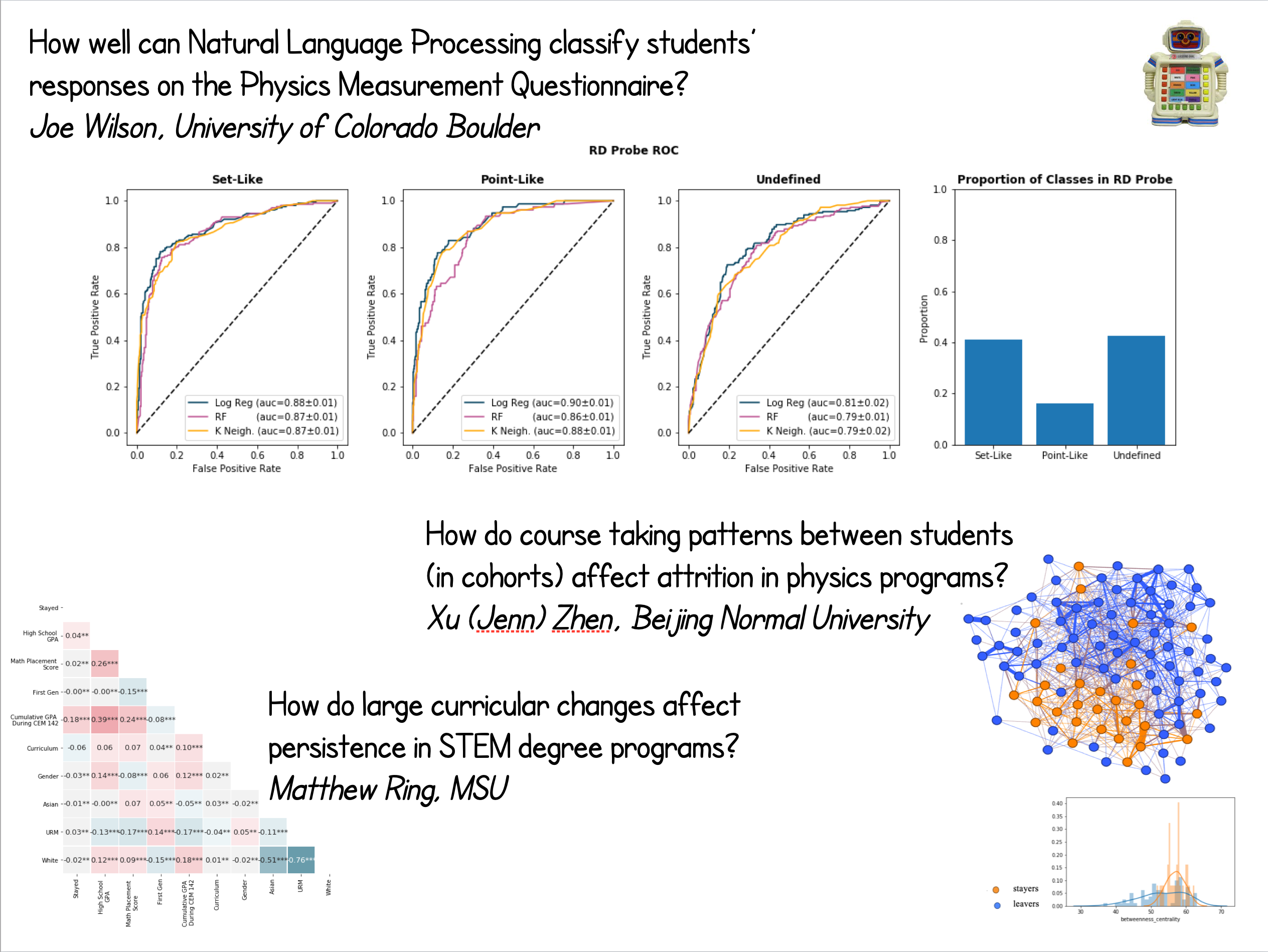
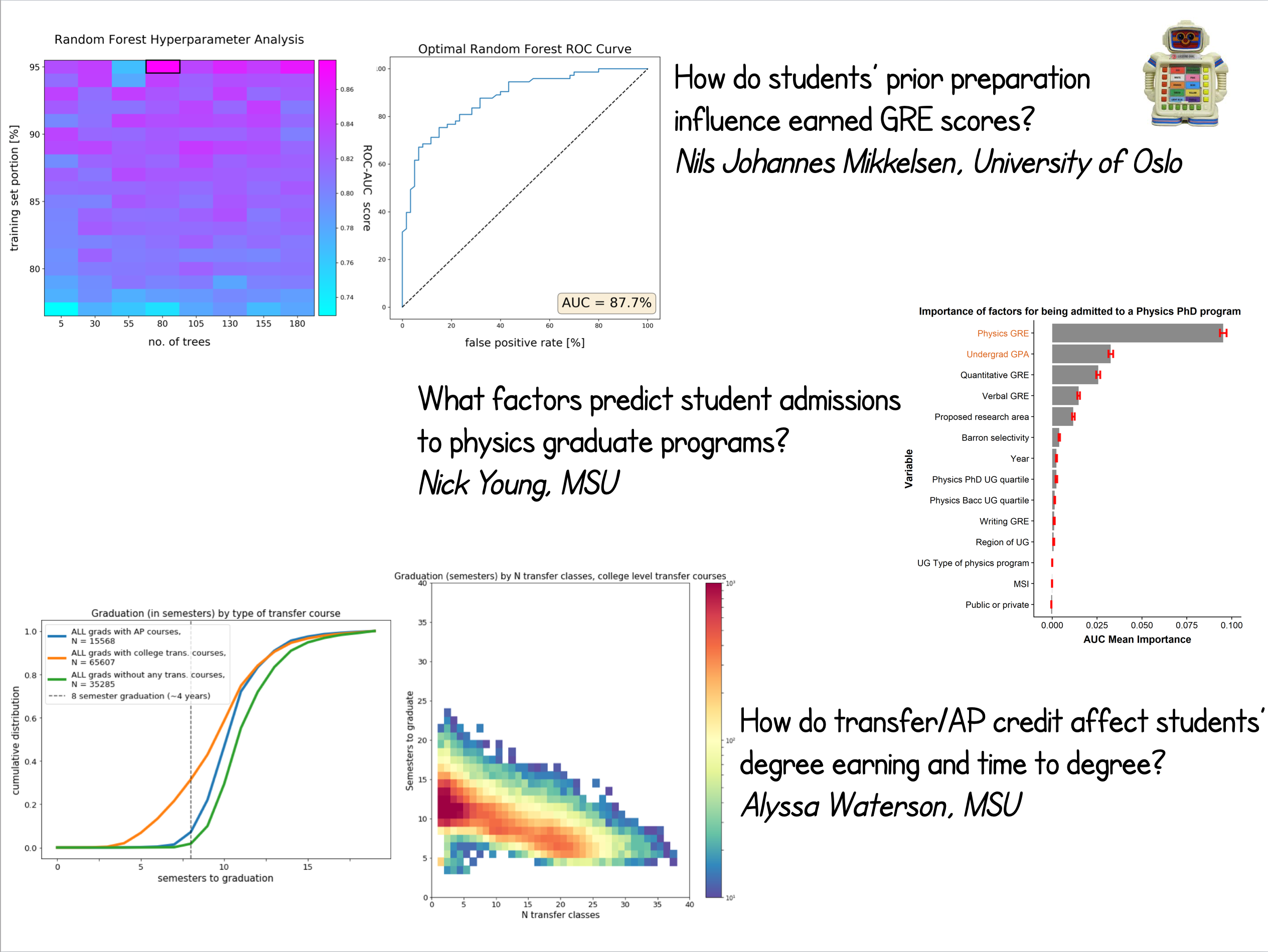 ### Exploring Data Tutorial
We have collected assessment scores from students on a mechanics concept inventory.
For this tutorial, we will guide you through reading in, plotting, and deciding on research questions.
* [Link to Jupyter Notebook](https://github.com/learningmachineslab/tutorials/blob/master/exploring-data/data_exploration_tutorial.ipynb)
* [Link to Data](https://github.com/learningmachineslab/tutorials/raw/master/exploring-data/data/regression_data.csv)
* [Google JamBoard](https://jamboard.google.com/d/18xCxRs7PLuf1Zbb0HClImXql8RHqVunD56YzBQ-BKbE/edit?usp=sharing)
### Regression Tutorial
With the same assessment scores, we will determine what factors contribute most in a model that predicts those scores.
We will also evaluate different models to try to understand how robust our findings are.
* [Link to Jupyter Notebook](https://github.com/learningmachineslab/tutorials/blob/master/regression/regression.ipynb)
* [Link to Data](https://raw.githubusercontent.com/learningmachineslab/tutorials/master/regression/data/regression_data.csv)
* [Google JamBoard](https://jamboard.google.com/d/18xCxRs7PLuf1Zbb0HClImXql8RHqVunD56YzBQ-BKbE/edit?usp=sharing)
[Regression Methods in Python](https://scikit-learn.org/stable/supervised_learning.html#supervised-learning)
## Thank you!
### Contact information
* Danny Caballero [caballero@pa.msu.edu](mailto:caballero@pa.msu.edu)
* Rachel Henderson [hende473@msu.edu](mailto:hende473@msu.edu)
[LML Tutorials Website](https://github.com/learningmachineslab/tutorials)
### Exploring Data Tutorial
We have collected assessment scores from students on a mechanics concept inventory.
For this tutorial, we will guide you through reading in, plotting, and deciding on research questions.
* [Link to Jupyter Notebook](https://github.com/learningmachineslab/tutorials/blob/master/exploring-data/data_exploration_tutorial.ipynb)
* [Link to Data](https://github.com/learningmachineslab/tutorials/raw/master/exploring-data/data/regression_data.csv)
* [Google JamBoard](https://jamboard.google.com/d/18xCxRs7PLuf1Zbb0HClImXql8RHqVunD56YzBQ-BKbE/edit?usp=sharing)
### Regression Tutorial
With the same assessment scores, we will determine what factors contribute most in a model that predicts those scores.
We will also evaluate different models to try to understand how robust our findings are.
* [Link to Jupyter Notebook](https://github.com/learningmachineslab/tutorials/blob/master/regression/regression.ipynb)
* [Link to Data](https://raw.githubusercontent.com/learningmachineslab/tutorials/master/regression/data/regression_data.csv)
* [Google JamBoard](https://jamboard.google.com/d/18xCxRs7PLuf1Zbb0HClImXql8RHqVunD56YzBQ-BKbE/edit?usp=sharing)
[Regression Methods in Python](https://scikit-learn.org/stable/supervised_learning.html#supervised-learning)
## Thank you!
### Contact information
* Danny Caballero [caballero@pa.msu.edu](mailto:caballero@pa.msu.edu)
* Rachel Henderson [hende473@msu.edu](mailto:hende473@msu.edu)
[LML Tutorials Website](https://github.com/learningmachineslab/tutorials)
